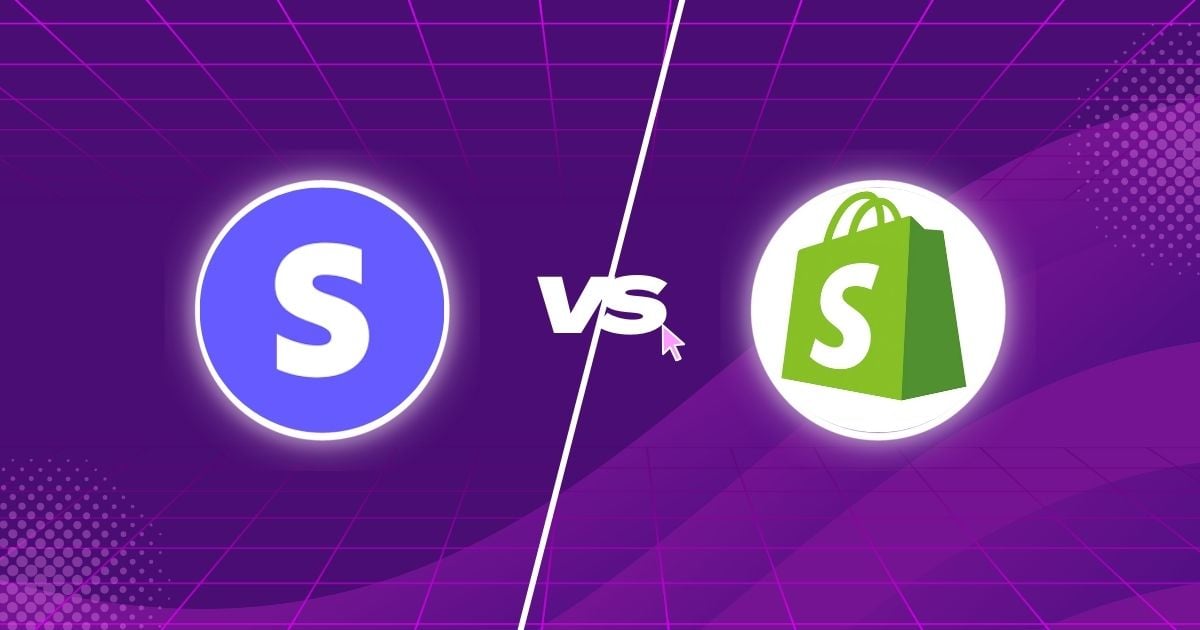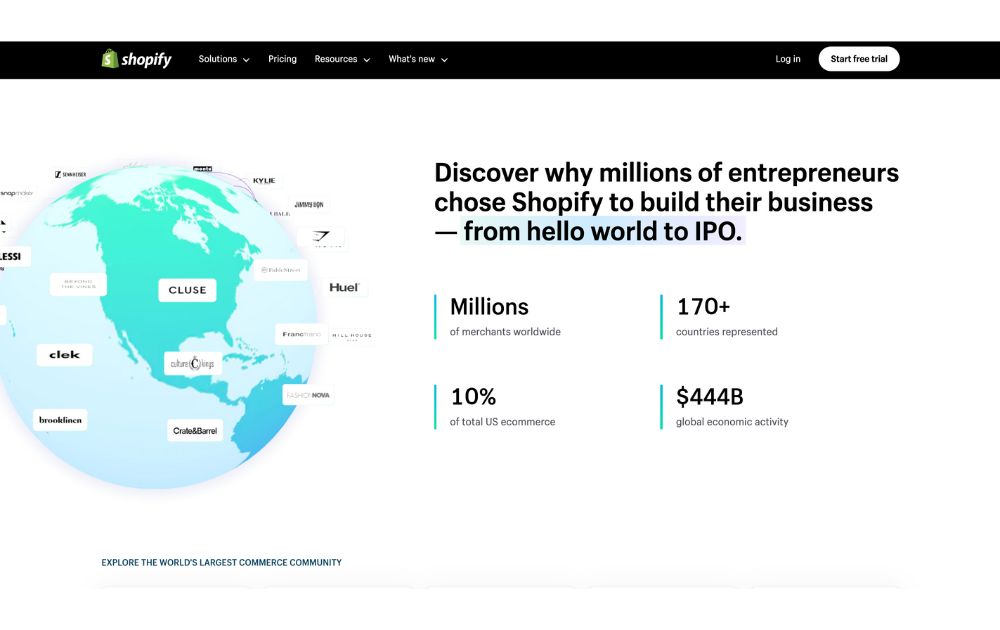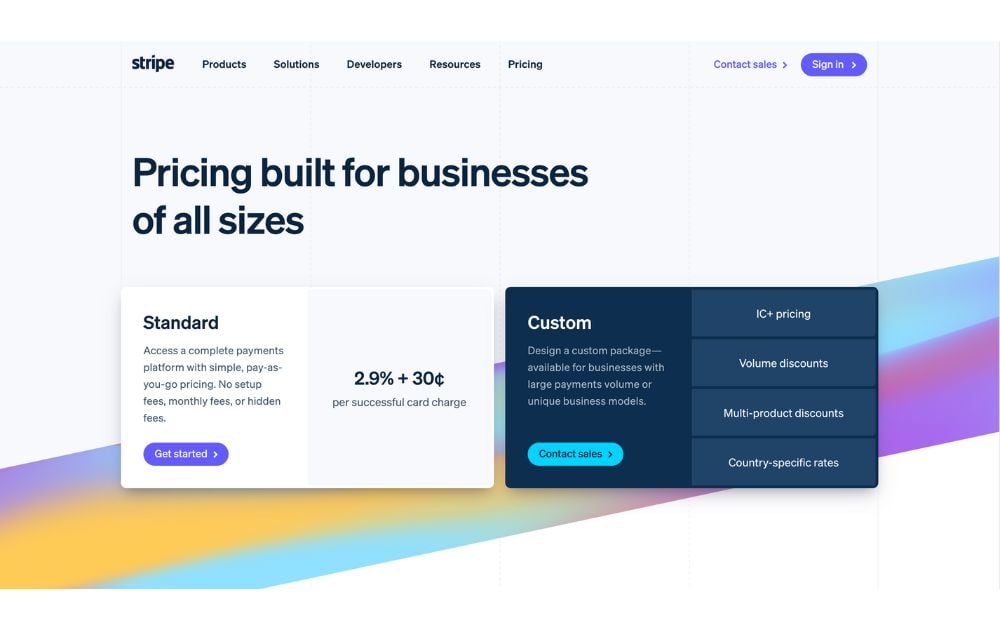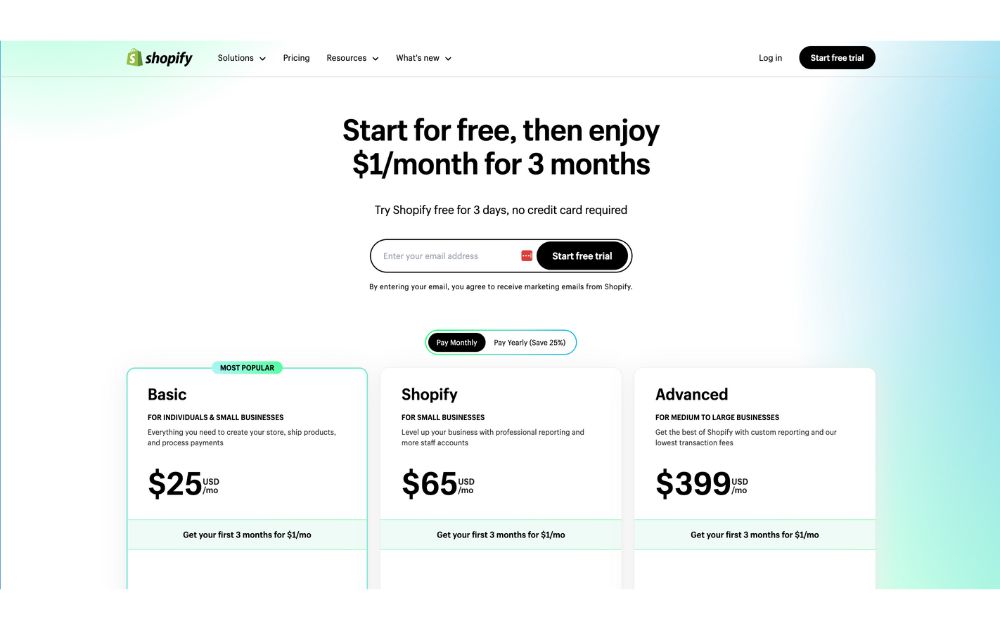
Being a successful business in the digital age requires a lot of research – from learning how to use on-demand services to learning how to create a brand style guide.
And here’s another crucial thing you need to put on your study list: researching e-commerce payment gateways and choosing the right one for your business.
Two giants in the e-commerce landscape, Stripe and Shopify – particularly Shopify Payments – often come up in conversations when entrepreneurs and business owners discuss the best solutions for online transactions.
In this Stripe vs. Shopify article, we’ll demystify the complexities by offering a head-to-head comparison. Let’s dive right in!
Stripe vs. Shopify
Before we compare Stripe vs. Shopify, let’s review each company and what it has to offer.
Stripe is a tech company that provides payment processing solutions for online businesses and e-commerce platforms. Founded in 2009 by Irish brothers John and Patrick Collison, Stripe has become one of the leading payment gateways in the world.

The company’s software allows businesses to accept payments, manage subscriptions, and handle other online financial transactions. It offers global payments, revenue and finance automation, and banking-as-a-service.
On the other hand, Shopify is a leading e-commerce platform that allows individuals and businesses to create and manage online stores. It has its own payment gateway called Shopify Payments, designed to simplify the process of accepting online payments for Shopify store owners. It is fully integrated into the Shopify platform, eliminating the need for third-party payment processors.

It’s crucial to note that Shopify Payments is currently only available to stores in select countries.
What is the Difference Between Stripe and Shopify?
Both Stripe and Shopify Payments are popular solutions for handling online payments, but they serve different needs and are best suited for different types of businesses. Here’s a breakdown of the Stripe vs. Shopify Payments key differences.
Customization
- Stripe. One of Stripe’s standout features is its highly customizable APIs. This allows businesses to create tailored payment flows, subscription models, and even custom UI elements. It’s a developer-friendly platform that can adapt to complex business needs.
- Shopify Payments. While not as customizable as Stripe, Shopify Payments is designed to work “out of the box” with Shopify stores. It offers basic customization options through the Shopify admin panel, but you may need to rely on third-party apps or additional coding for more advanced features.
Payment Methods
- Stripe. Stripe supports various payment methods, including debit and credit cards, ACH transfers, and digital wallets like Apple Pay and Google Pay. This makes it easier to cater to a diverse customer base.
- Shopify Payments. This service also supports various payment methods but is optimized for the Shopify ecosystem, meaning it may not support as many local payment methods as Stripe.
Fraud Prevention
- Stripe. Stripe uses machine learning and advanced algorithms for its fraud prevention system, known as Stripe Radar. It helps businesses identify and block fraudulent transactions while minimizing false positives.
- Shopify Payments. Shopify Payments includes basic fraud prevention features like fraud analysis and CVV checks. However, you may need to use third-party apps in the Shopify App Store for more advanced fraud prevention.
Fees
- Stripe. If you’re curious about Stripe vs. Shopify cost, Stripe generally charges a flat fee per transaction, with additional costs for extra services like international payments or currency conversion. Its website lists a Standard pricing rate of 2.9% + 30¢ per successful card charge.

- Shopify Payments. You won’t incur additional transaction fees if you’re using Shopify Payments on a Shopify store. However, Shopify’s monthly subscription fees still apply. Also, Shopify imposes a nominal charge for processing major credit card payments like Visa and Mastercard in your online shop. The cost of these fees fluctuates based on the subscription plan you select.

Integration
- Stripe. Stripe’s API-first approach means that integration can require a fair amount of development work. However, this also allows for greater flexibility and customization to fit specific business models.
- Shopify Payments. As an in-house solution for Shopify stores, Shopify Payments comes pre-integrated, making the setup process much simpler but potentially less flexible for unique business needs.
Is Shopify or Stripe better?
Choose Shopify Payments if:
- You’re Using Shopify. The difference between Stripe vs. Shopify fees can differ depending on the business you’re running. But if your online store is built on Shopify, using Shopify Payments can make a lot of sense. It’s fully integrated into the platform, making setup and management straightforward.
- You Want Simplicity. Shopify Payments is designed to work “out of the box,” offering a user-friendly experience with minimal setup.
- You Want to Avoid Additional Fees. Using Shopify Payments eliminates the need for additional transaction fees when using third-party payment gateways on Shopify.
- You’re Not Tech-Savvy. If you’re not comfortable dealing with APIs and custom integrations, Shopify Payments provides a simpler, more straightforward option.

On the other side of the coin, choose Stripe if:
- You Need Customization. Stripe’s robust set of APIs allows for a highly customizable payment experience. If your business has unique payment needs, Stripe offers more flexibility.
- You’re Not Using Shopify. Why is Stripe better? It is if you’re not using Shopify. Stripe is a more versatile option integrated with various other platforms.
- You Want Advanced Fraud Protection. Stripe offers more advanced fraud protection features, which might be crucial for businesses particularly concerned about this.
- You Have a Global Customer Base. Stripe supports a wide range of currencies and payment methods, making it easier to cater to customers around the world.
The Lowdown
In the head-to-head battle of Stripe vs. Shopify Payments, both sides offer strength, and it all comes down to your needs as a business. Shopify Payments is generally easier to use and integrates seamlessly with Shopify, but it’s less flexible than Stripe.
Stripe, on the other hand, offers more customization and is better suited for businesses with specific or complex payment needs, but it can be more challenging to set up and manage.
Get the Ecommerce Designs You Need
While payment processing is a critical aspect of your online business, it’s just one piece of the puzzle. Another crucial element is high-quality design, which can significantly impact your brand’s perception and customer engagement.
Embracing an unlimited graphic design service can be a game-changer for brands seeking to elevate their visual identity and get better results online. The flexibility, cost-effectiveness, and quick turnaround times empower businesses to maintain a consistent and appealing visual presence across various platforms.
With a dedicated team of skilled designers at your disposal, the possibilities are limitless. Ready to see how Penji is helping ecommerce brands just like yours?
About the author

Carla Deña
Carla is a journalist and content writer who produces stories for both digital and legacy media. She is passionate about creativity, innovation, and helping small businesses explore solutions that drive growth and social impact.










